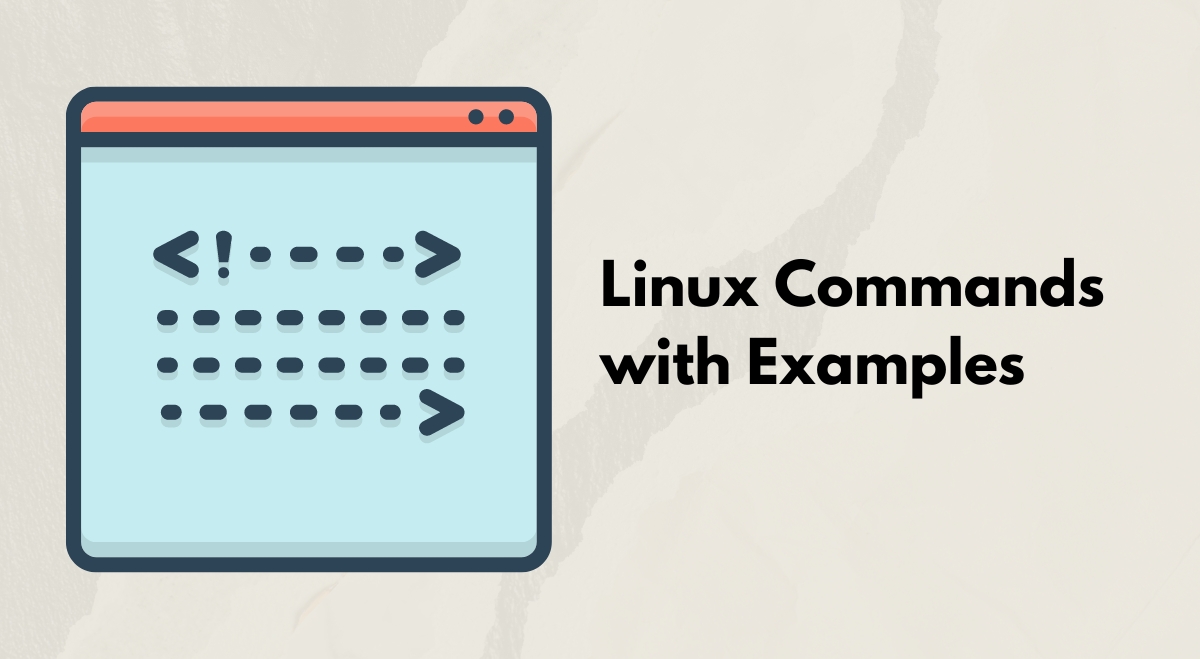Linux commands are powerful tools that allow users to interact with and control their Linux operating system through a text-based interface. This guide covers essential Linux commands across various categories, providing explanations and examples for each.
File and Directory Management Command Line in Linux
ls – List directory contents
Lists files and directories in the current directory.
Examples:
ls ls -l # Long format with details ls -a # Show hidden files
cd – Change directory
Changes the current working directory.
Examples:
cd /home/user/documents cd .. # Move up one directory cd ~ # Go to home directory
pwd – Print working directory
Displays the current directory path.
Example:
pwd
mkdir – Make a directory
Creates a new directory.
Example:
mkdir new_folder
rmdir – Remove directory
Removes an empty directory.
Example:
rmdir empty_folder
touch – Create an empty file
Creates a new empty file or updates timestamps of existing files.
Example:
touch newfile.txt
cp – Copy files and directories
Copies files or directories to another location.
Examples:
cp file.txt /home/user/documents/ cp -r folder1 folder2 # Copy directory recursively
mv – Move or rename files and directories
Moves files/directories or renames them.
Examples:
mv file.txt /home/user/documents/ mv oldname.txt newname.txt
rm – Remove files or directories
Deletes files or directories.
Examples:
rm file.txt rm -r folder # Remove directory and contents recursively
find – Search for files and directories
find command in Linux searches for files and directories based on various criteria.
Examples:
find /home -name "*.txt" find . -type d # Find directories
grep – Search text within files
Searches for patterns in files or input.
Examples:
grep "pattern" file.txt grep -r "pattern" directory/
File Viewing and Editing Command Line in Linux
cat – Concatenate and display file contents
Displays contents of files.
Example:
cat file.txt
less – View file contents page by page
Allows scrolling through large files.
Example:
less largefile.txt
head – Display the beginning of the file
Shows the first few lines of a file.
Example:
head -n 10 file.txt # Show first 10 lines
tail – Display end of file
Shows the last few lines of a file.
Example:
tail -n 20 file.txt # Show last 20 lines
nano – Text editor
Simple text editor for the command line.
Example:
nano file.txt
vim – Advanced text editor
Powerful text editor with many features.
Example:
vim file.txt
System Information and Management Command Line in Linux
uname – Print system information
Displays system information.
Examples:
uname -a # All system info uname -r # Kernel release
top – Display and manage processes
Shows a real-time view of running processes.
Example:
top
ps – Report process status
Lists running processes.
Examples:
ps aux # Detailed process list ps -ef # Full-format listing
kill – Terminate processes
Sends signals to processes, often used to terminate them.
Examples:
kill 1234 # Terminate process with PID 1234 kill -9 1234 # Force terminate
df – Report file system disk space usage
Shows disk space usage.
Example:
df -h # Human-readable format
du – Estimate file space usage
Estimates file and directory space usage.
Example:
du -sh * # Summarize usage for current directory
free – Display the amount of free and used memory
Shows memory usage statistics.
Example:
free -m # Display in megabytes
User and Permission Management Command Line in Linux
sudo – Execute command as superuser
Executes commands with elevated privileges.
Example:
sudo apt update
chmod – Change file permissions
Modifies file permissions.
Examples:
chmod 755 file.txt chmod u+x script.sh # Add execute permission for user
chown – Change file owner and group
Changes the owner and group of files/directories.
Example:
chown user:group file.txt
useradd – Create a new user
Adds a new user account.
Example:
sudo useradd newuser
passwd – Change user password
Changes password for a user account.
Example:
passwd username
Networking Command Line in Linux
ping – Send ICMP echo request to network hosts
Tests network connectivity.
Example:
ping google.com
ifconfig – Configure network interface
ifconfig command in Linux displays or configures network interfaces.
Example:
ifconfig
netstat – Network statistics
Displays network connections and routing tables.
Example:
netstat -tuln
ssh – Secure shell client
Connects to remote systems securely.
Example:
ssh user@hostname
scp – Secure copy
Copies files between hosts on a network.
Example:
scp file.txt user@remote:/path/
Package Management Command Line in Linux
apt – Package management tool (Debian/Ubuntu)
Manages software packages on Debian-based systems.
Examples:
sudo apt update sudo apt install package_name
yum – Package management tool (Red Hat/CentOS)
Manages software packages on Red Hat-based systems.
Examples:
sudo yum update sudo yum install package_name
File Compression and Archiving Command Line in Linux
tar – Tape archiver
Linux tar command creates and extracts archive files.
Examples:
tar -cvf archive.tar files/ tar -xvf archive.tar
gzip – Compress or expand files
Linux gzip command compresses files.
Examples:
gzip file.txt gunzip file.txt.gz
System Control Command Line in Linux
shutdown – Shut down or restart the system
Shut down or restart the system.
Examples:
sudo shutdown -h now # Shutdown immediately sudo shutdown -r +5 # Restart in 5 minutes
reboot – Reboot the system
Restarts the system.
Example:
sudo reboot
Miscellaneous Commands in Linux
history – Command history
Shows previously executed commands.
Example:
history
man – Manual pages
Displays manual pages for commands.
Example:
man ls
echo – Display a line of text
Prints text to the terminal.
Example:
echo "Hello, World!"
date – Display or set system date and time
Shows or sets the system date and time.
Example:
date
which – Locate a command
Shows the full path of shell commands.
Example:
which python

